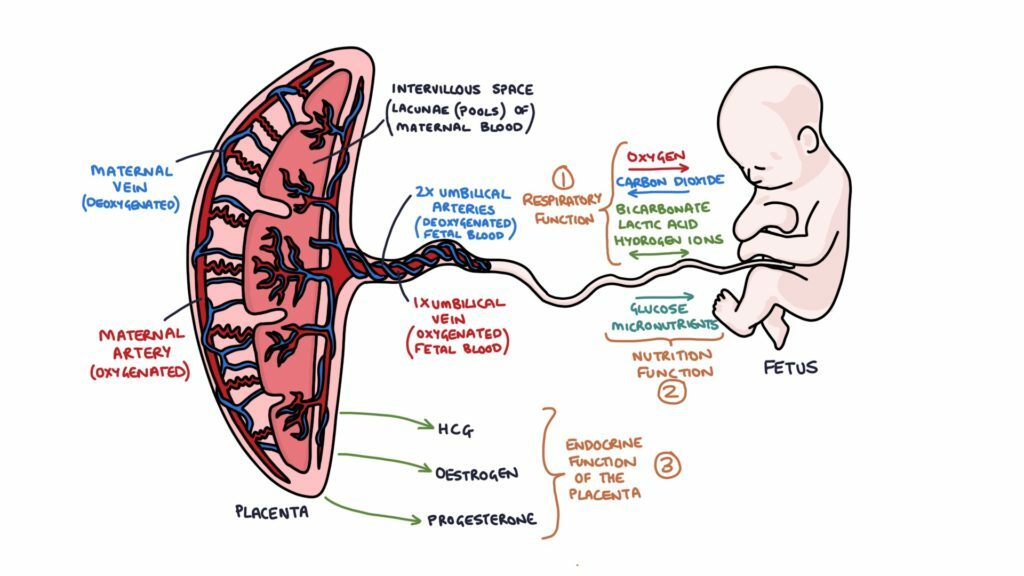PLACENTA IN MAMMALS
The placenta is a vital organ that develops during pregnancy in mammals, facilitating the exchange of nutrients, gases, and waste products between the mother and the developing fetus.
This complex structure has evolved independently in different mammalian lineages, leading to a diversity of placental forms and functions.
Structure:
The structure of the placenta varies widely among mammalian species. However, all placentas consist of fetal and maternal components.
The fetal component, known as the chorion, is derived from the embryonic tissues and contains the fetal blood vessels.
The maternal component, known as the endometrium, is the lining of the uterus and contains the maternal blood vessels.

Function:
The primary function of the placenta is to provide a means of exchange between the maternal and fetal circulatory systems.
Through the placenta, nutrients such as glucose, amino acids, and lipids are transferred from the mother to the fetus, while waste products such as carbon dioxide and urea are transferred from the fetus to the mother.
The placenta also plays a crucial role in hormone production, helping to maintain pregnancy and regulate fetal development.

Evolutionary Significance:
The evolution of the placenta is a fascinating area of study, as it represents a key innovation that has allowed mammals to give birth to live young and occupy diverse ecological niches.
The evolution of the placenta is thought to have been driven by selective pressures such as the need to provide sufficient nutrients to the developing fetus and protect it from maternal immune responses.

--> The placenta is a remarkable organ that plays a crucial role in mammalian reproduction.
--> Its structure, function, and evolutionary history are areas of active research that continue to shed light on the unique adaptations of mammals and the complexities of pregnancy.
There are no products listed under this category.
